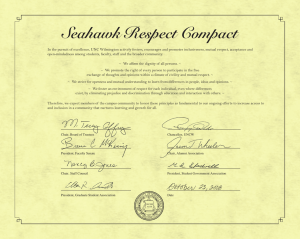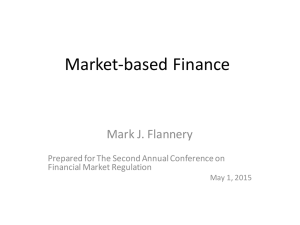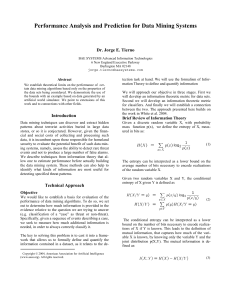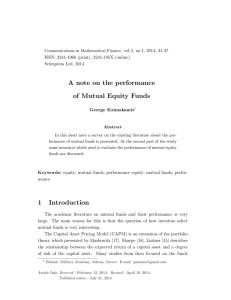SIZE, RISK, AND RETURNS IN COMMERCIAL BANKING Michael Joseph McNamara, Ph.D.
advertisement
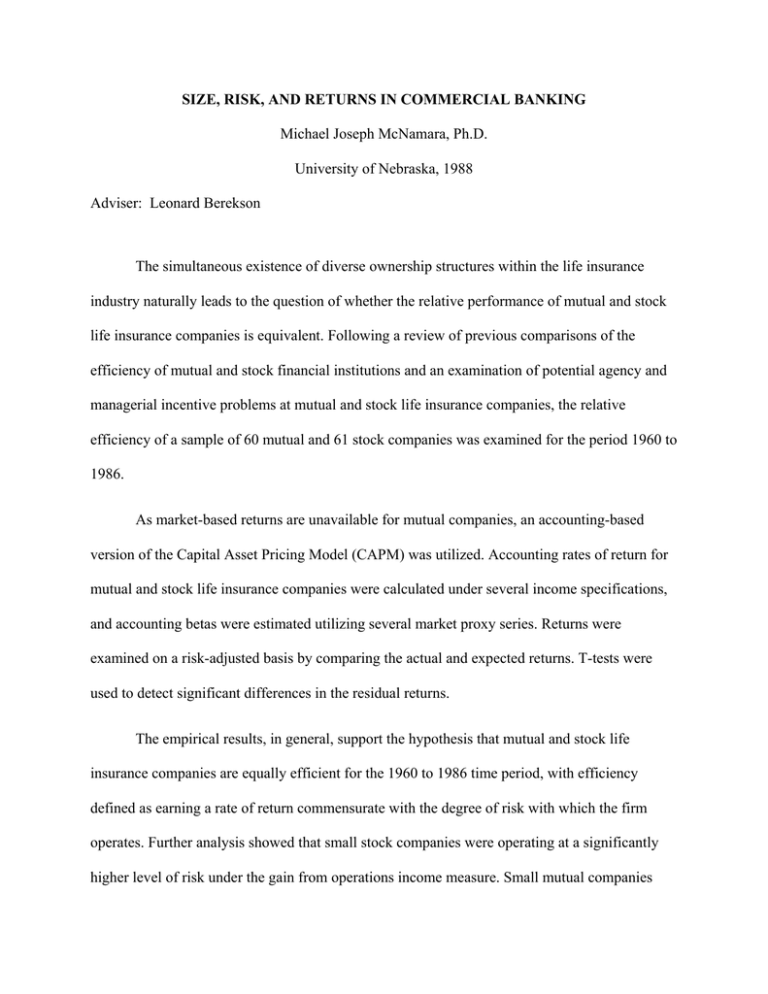
SIZE, RISK, AND RETURNS IN COMMERCIAL BANKING Michael Joseph McNamara, Ph.D. University of Nebraska, 1988 Adviser: Leonard Berekson The simultaneous existence of diverse ownership structures within the life insurance industry naturally leads to the question of whether the relative performance of mutual and stock life insurance companies is equivalent. Following a review of previous comparisons of the efficiency of mutual and stock financial institutions and an examination of potential agency and managerial incentive problems at mutual and stock life insurance companies, the relative efficiency of a sample of 60 mutual and 61 stock companies was examined for the period 1960 to 1986. As market-based returns are unavailable for mutual companies, an accounting-based version of the Capital Asset Pricing Model (CAPM) was utilized. Accounting rates of return for mutual and stock life insurance companies were calculated under several income specifications, and accounting betas were estimated utilizing several market proxy series. Returns were examined on a risk-adjusted basis by comparing the actual and expected returns. T-tests were used to detect significant differences in the residual returns. The empirical results, in general, support the hypothesis that mutual and stock life insurance companies are equally efficient for the 1960 to 1986 time period, with efficiency defined as earning a rate of return commensurate with the degree of risk with which the firm operates. Further analysis showed that small stock companies were operating at a significantly higher level of risk under the gain from operations income measure. Small mutual companies were operating at a significantly higher rate of return under the gain from operations less dividends income measure. The analysis also revealed that there had been a significant increase in the rate of return and the degree of risk for mutual companies between the 1960 to 1973 time period and the 1974 to 1986 time period. Residual returns for all companies in period two were significantly greater than period one residual returns. The results were sensitive to the income measure specified and the market proxy series employed.



